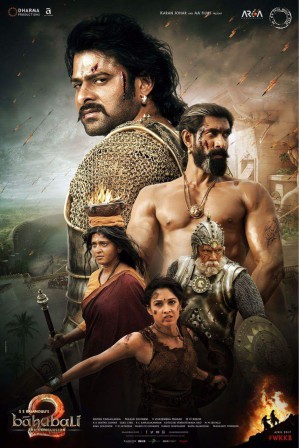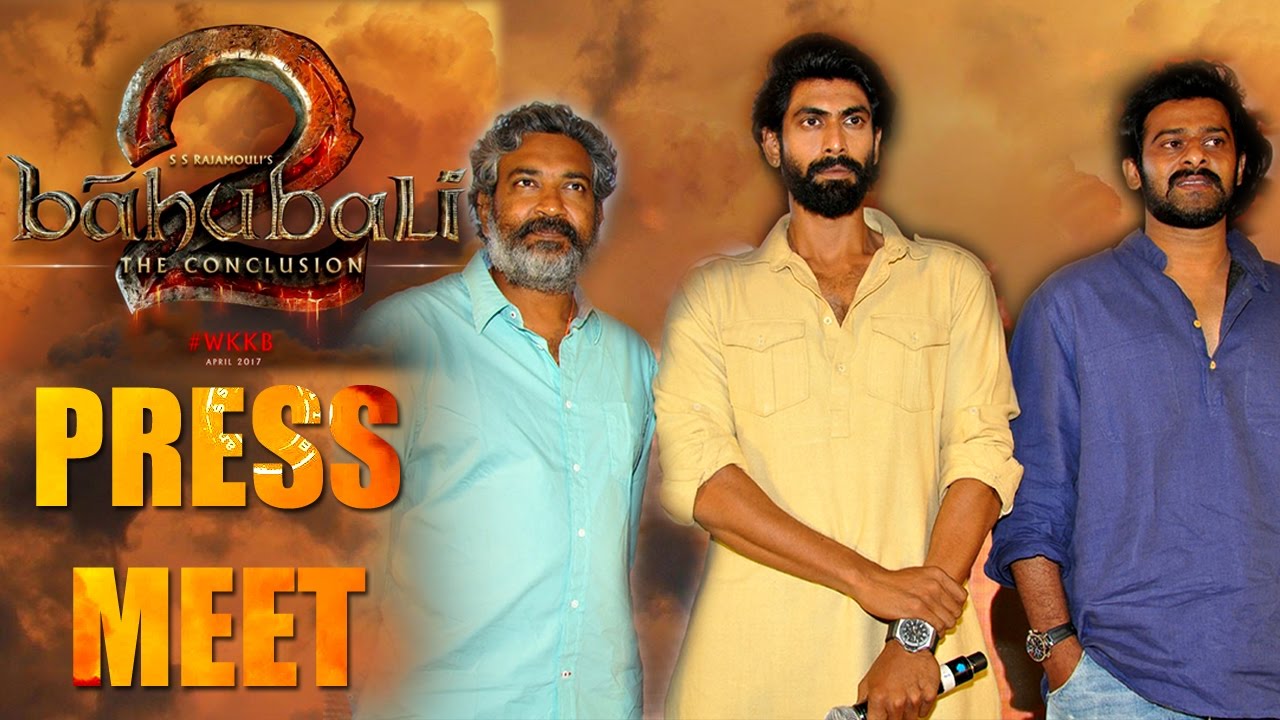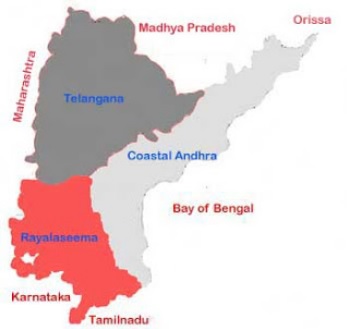 As if Mahakal himself had decided to suddenly anoint Andhra cinema with national (and international renown) back-to-back, we follow up our article on Phalke Award winner K.Viswanath garu with an article on the topic of the hour: Baahubali 2.
As if Mahakal himself had decided to suddenly anoint Andhra cinema with national (and international renown) back-to-back, we follow up our article on Phalke Award winner K.Viswanath garu with an article on the topic of the hour: Baahubali 2.
At first glance, some may groan saying “yet another Baahubali 2 review”. But this is no review.
Many may balk at this title for many reasons. They may say that Baahubali originally refers to Gomatesvara in Karnataka. Be that as it may, for the foreseeable future the name will mean the Baahubali of Amarendra and Mahendra, not of Rishabhadeva.
Others may say that Baahubali belongs to all Telugus. True, but by that token it also now belongs to all Indians. Further, the word Andhra doesn’t just refer to new Andhra Pradesh state, but also old Andhra desa, and by association, the old undivided State of Andhra Pradesh. Therefore, Telanganites need not fear. Unless you consider urdu your state language and mother tongue, and shamefully idolise turk aristocracy (like this jester) rather than native Telugus , the Andhra-Telugu-Telugu States association will remain.
Finally, many of you may ask why this title at all. After all, a dime a dozen Baahubali 2 reviews have already been written (some ripping off in part or whole our Baahubali 1 review from 2015 ). In addition, why should discussion revert to that of only Andhra and Telugus at the very moment all of India (and a good chunk of the World given box office collections) is agog in Baahubali-mania? But it is in fact this precise reason that we must talk about this now. Long time readers would recall our article about how to Rebrand Andhra. This is the ideal point in time to rebrand our state in earnest.
From lead actors, to producers, to composers, to the man of the hour (the director himself), this was an Andhra movie. Yes, it featured talent from South India (as well as honorary South Indian, and real life Sindhi Tamannah Bhatia), yes the cinematographer Senthil did a splendid job. But this was an Andhra project from its very conception by K.V.Vijayendra Prasad (father of director S.S. Rajamouli). The composer Keeravani is also a Telugu, and even Ramya Krishna married to a Telugu. That is why it’s important to acknowledge BB2 as an Andhra production as well as a presentation of Indic culture.
This is India’s Crouching Tiger Hidden Dragon
True, Crouching Tiger Hidden Dragon was more poetry than popcorn. Yes, it managed to preserve an art house mystique that from the tone and mood, the saga of Sivagami clearly was not interested in. Sure, Baahubali is more Lord of the Rings than Hero. But as usual, our nitpickers and pedantic pseudo-pundits miss the point. Baahubali is the vehicle for Indian Culture that Crouching Tiger was for Chinese culture.
Like many of you, I too had many Punjabi friends growing up (and still have many), and respect their culture and admire them for their ability to keep the Punjabi brand trendy and accessible. And yet, despite the declaration of the Punjabification of India, the South has risen again. Rather than Punjabi-led (and Pak-jabi purchased) Bollywood, it is Andhra’s Tollywood that has produced a Pan-India movie with global appeal. Those of you old enough to remember Chinese hit Crouching Tiger, Hidden Dragon from 17 years ago, would remember how after a long lull since the days of Bruce Lee, the Culture of China became trendy again in the West and the rest. It was the first true introduction of mass China cinema to the American masses (By the Chinese, for the World). Baahubali 2 also managed to achieve this balance of high culture for the masses. True, CTHD was more restrained in both special effects and acting while Baahubali was more in the mould of that typical Telugu taste for the scientifically impossible.
But then again, what better represents the Indian character than that? Why did this film strike a chord even with countries featuring our mortal enemies? It’s because rather than looking down upon the masses and their taste for the physics defying, it takes them in like Amarendra took in his subjects and brings them along for his ride and reign.
Found on FB. Hilarious! #Movies #Bollywood #Hollywood #Tollywood #RGV pic.twitter.com/NH5Tbb6NZq
— 𝑴𝒆𝒈𝒉𝒂𝒂 𝑮𝒉𝒐𝒔𝒉 (@MeghaaGhosh) April 2, 2013
Why are Telugu films so logic-defying in their heroes’ action (and Chiranjeevi’s films so age-defying in their ammudu-kummudu romances)? It’s because the average Telugu not only imagines his way to victory but emotes his way through life. Of course the coconut trees could double for catapults and trebuchets, the fan emotionally connects with the hero so much, his hero must have done that!
Satyajit Ray gave an introduction for Indian Cinema to perfumed audiences, but Baahubali is the Brand that represents Indian culture (and Andhra’s in particular) on a grand cinematic scale. For those seeking to characterise Indian culture like this or like that, all one need do is show one clip of Devasena or Sivagami to understand how real Indian culture treats women—like Divine Shaktis. Indeed, it has a lesson on how to behave for not only Modern Girls, but also Modern Boys. It also has a lesson for future filmmakers & lyricists on writing real Romance with better Romantic dialogues than the current college cliche crop.
Ang Lee’s epic, and Ang Lee himself, have gone on to achieve a place in Global Cinema that Rajamouli’s epic, and Rajamouli himself, will soon come within grasp of. Whether it and he achieve it is contingent upon whether they not only stay true to telling our stories, but also stay true to themselves.
Nitpickers again will assert that Baahubali won’t sweep into the Oscar’s like CTHD or even get the same US Collections, but it need not. The simple fact that it placed 1st on Thursday night at the US Box office and finished a close 3rd for the weekend (and ahead of a Tom Hanks movie), only goes to show how much of a splash it made without the US mass advertising that Crouching Tiger had. Moreover, it also sheds spotlight on the irony of Bollywood actress Deepika Padukone trading in her star status for a bit part in the Fast and the Furious Franchise while fellow Kannadiga Anushka Shetty played the lead actress in an Indian movie that also finished in the US Box Office top 3. Self-respect should be non-negotiable. If you have to pick Anushka, better Shetty than Sharma.
Is Baahubali “a mania”?—perhaps. But those whining about it are obviously manic (depressives) and certainly certifiable. So rather than carp and cavil about them, brush the dirt off your shoulder and enjoy the songs instead.
Mahishmati Odyssey from Madhya Pradesh to Andhra
https://twitter.com/IndiaHistorypic/status/859642180637519876
Why was this story about Mahishmati Samrajyam (in modern Madhya Pradesh) and Kunthala rajya (in Karnataka), a Telugu story at all? Well, one need only start with the Palnati Veera Charitra. That epic by Kavi Sarvabhauma Srinatha has not for nothing, been dubbed the Andhra Kurukshetra. The Kalachuris were an intrinsic part of this epic, and through them, the Mahishmati/Haihaya connection to Andhra even more obvious. And for the self-proclaimed history savants, there was even a Bijjala deva ruler among the Kalyani Kalachuris, and Kalachuri Gangeyadeva was one of the commanders in the expeditions of Indic kings against the Ghaznavids. In any event, Mahishmati through the PVC has a natural place in the Andhra psyche for our own reason.
Should a remake of this movie be done? Can any actor ever feel the shoes of Naata-Nayaka NTR? Maybe, maybe not. But ultimately, the answer will hinge on aesthetics.
Aesthetics
For the paint-by-numbers pedants, criticism always devolves to a mere formula. They remind me of this scene from Dead Poets Society, writing textbooks which graphically analyse the effect of poetry.
Similarly, they ignore the obvious fact that aesthetics is not simply mere rasa. The full translation of aesthetics is rasalankara. That is, the beautiful presentation of sentiment. Baahubali succeeded at veera rasa for the very reason Manam succeeded at vatsalya: They both had resonance. Contrary to purists asserting aesthetics is mere rasa—to simply reduce this vast concept of aesthetics to only sentiment does injustice to both Bharata muni (author of the original 8 rasas) as well as Anandavardhana and his Dhvanyaloka: Dhvani is resonance, and is considered by many to be the most important consideration for excellent literature, and by extension, excellent cinema. Rasa is generated not only by bhavas and vibhavas, but is made effective by dhvani. If something has resonance, it captures our attention and even imagination.
Like the lifeless beauty of the princess of Pataliputra, paint-by-numbers pedants are flawed in their conception of life and literature. It does not matter if on-paper rasa is easily identifiable, or even if the ancillary bhavas create the necessary rasa, the key question is whether they resonate with artist and audience alike. That is the true test of the power of Art. Why can the same person enjoy both Citizen Kane and Rocky IV? Why is it that individuals can be fans of both Toshiro Mifune and Brahmanandam? It is because these all resonate, albeit in different ways.
As for the question of Saastriya (the true definition of classicism): the issue is not whether the director of Baahubali is steeped in Dhvanyaloka or Kavya-mimamsa or Natya Sastra. The issue is the letter of the law versus the spirit of the culture. Much like the same band of murkhapanditas who believe “beef in vedas” based on questionable interpretation of sastra, paint-by-numbers pedantic pundits can’t move an inch or write a letter without the letter of law guiding them. That is the importance of studying not only the letter of the law but the spirit behind it, whether in Natya or in Dharma.
Perhaps rather than paint-by-numbers, connect-the-dots would be more their speed.
Further, merely repeating the same old themes and stories is not a true sign of creativity. What sets Rajamouli (and Vijayendra Prasad) apart, is that they took inspiration from our Itihaasa-Purana and created something new. Some of the self-same nitpicking critics have attempted to fault the Koduri clan for historical ambiguity. Others have have made comparisons to Maya Bazaar calling them both mythology. But Baahubali’s genre is historical fantasy. In contrast, Maya Bazaar is a putative presentation of Purana.
Purana after all is Divine in conception. And the Vedas themselves, as we know, are apaurusheya. This is the danger of having nastika charvakas, cacophonous casteists, and avowed atheists anoint themselves as acharyas—they refuse to acknowledge that the authors of these divine texts and canons are in fact merely recipients. Mahadev is the author, we are just his keyboards. Srisaila Sri Rajamouli on the other hand, is divinely inspired, and authored these films in honour of Mahadev.
The effects of the two films (Maya Bazaar and Baahubali) may be similar (connected with elite and mass audiences alike, created interest in our epic heritage and ancient history), but their immediate purposes are different. Further attempts to undercut Rajamouli through forced comparisons with K.Viswanath are also maladroit malevolence by malevolents. K.Viswanath gaaru was bringing high culture in the form of art cinema to the masses. There is an element of realism in his films. In contrast, Rajamouli is elevating mass cinema to the heights of high culture. Unless you honestly believe that Baahubali was flying a swan ship in the air, it’s quite clear many pedantic poseurs fail in basic analogies.
It is inapposite to seek out such juxtapositions. Baahubali is not Saahityam, as it is clearly Chalanachitram. But if it has to fit into a literary genre, it is neither Itihaasa-Purana nor Kavya. It is in fact Katha—specifically Nidarsana Katha. Like the Panchatantra it gives stories for the edification and entertainment of viewers. Was there actually a blue jackal? Did the kingdom of crows fight a war with the kingdom of owls? Did four murkhapanditas manage to return a lion to life? The point of nidarsana katha is not whether it stretches credulity (even within certain super-natural assumptions), rather, it is about educating and elevating audiences about topics relevant to life, especially life lived wisely.
Baahubali provided us with examples (the core purpose of nidarsana katha) from which to examine our own lives (Dharma vs Bandhutva, Love vs Duty, Duty vs Law) and gave us figures, most of whom were flawed, but all of whom aspired to some archetype and ended up exemplifying it. Baahubali is neither Itihaasa-Purana nor Mahakavya nor even Kaavya for that matter—how could it be? But inapposite and inapropos comparisons are appropriate for those who live secret lives of the inappropriate.
What Andhra (and India) now needs are Brand Ambassadors who have actually proven through action how to revive and reimagine the Samskruthi of Andhra & Bharatavarsha.
Andhra Brand Ambassadors
Rajamouli, Prabhas, and Rana will be Brand Ambassadors for Andhra for the foreseeable future. Indeed, any neta worth his salt will absolutely deploy these great talents. Rana for his Pan-India glamour, Prabhas for his compelling screen presence and everyman likeability, and Rajamouli for his consistently proven ability to conceive grand visions and implement them on record-breaking scale. Unlike a certain phony “Hollywood-returned” actress who pretends she can’t speak Telugu, all three Tollywood talents are proud speakers of their mother tongue. Indeed, one of the reasons why this film succeeded so well is because it didn’t just feature models who were dubbed (to Tamannah’s credit she was one of the first North actresses to learn Telugu, and neighbouring state Anushka is a natural). As we discussed in the aesthetics section, this is the precise point in time when non-Telugus are taking interest in our maathru bhasha, so Telugus must properly present it. This leads to the next point:
We Are All Andhra Brand Ambassadors Now
Yes, that’s right. Time to spit out that half-chewed pesarattu, wipe your mouth, tuck in your shirt, stand up straight, and start behaving like you represent a language group with a proud cultural and imperial history. Upgrade your tastes, improve your etiquette and manners, and be excellent cultural guides to our Indian brothers and sisters now taking an interest in the Telugu states and their official language.
We have come a long way from the triumphal declarations of “the Punjabification of India”, and “What Bengal thinks today, India thinks tomorrow”. Andhra’s hour is here, and it’s time we got our act together for the big show. Our Tamilian brothers, God bless ‘em, have long managed to convince every Bharatiya north of the Vindhya that only Tamizh was spoken “in Dravidian states”. Despite the boorish CNN18 anchor’s attempt to claim Baahubali for the Land of Temples & Bharatanatyam, this is an Andhra production and must be asserted as such. But at the same time, trading insults with them and others, or mocking others making a genuine attempt to learn and respect, is not the way to represent your Telugu Thalli. So here are a few pointers on how to ditch your gabbar singh handbook on etiquette and embrace your inner Amarendra (or Devasena).
1.Be gracious, but keep your self-respect. When people take an interest in showing respect to your culture & language, show good upbringing by being respectful. No, you don’t need to fall all over yourself to return praise in unseemly hyperbole. Just return the compliment proportionately and ask them if they need any help learning the language or have questions about the culture.
2.Learn about your Culture! If you were ever wondering why we invested so much time in a site on Andhra culture, now you know why it’s useful, at least in one scenario. Do you want to be embarrassed at your own ignorance of heritage when your friends from the North finally stop asking what the difference is between Telugu and Tamil? Take the time to read not only our blog posts but our pages, on Culture and Science and other Topics. Learn now so you don’t look foolish later.
3.Stop being caste crabs. It’s fine to take a small measure of pride in one’s heritage, family, and jati, but come on guys, it’s starting to get ridiculous. I won’t even dignify that Telugu Whatsapp forward that was doing the rounds on twitter trying to bring down Baahubali—but give me a break. Know when to put aside your competition and to show some class by letting someone else enjoy the spotlight in representing our state. There is plenty of blame to go around on the casteism front (UC, OBC, BC, SC, and Hi-C). Show some class, and represent your state with some respectability.
Don’t complain—up your game and treat it as a challenge to show your talent, rather than bring out the worst of your boorishness. Know when to slide out of your caste identity and slide into your Andhra identity, or more importantly the even greater Indian identity, rather than waking up and going to bed with the name of your caste on your lips. Look at it as a high standard to live up to, rather than a mythos that you must prevent reality from popping.
4.Clean up your act! Yes, everyone wants to have fun, and we all need to let loose some times. Sure, you have “worked hard to get job in phoreign”, but the time has come for Andhras to start showing they are serious people. You are not a five year old anymore—so stop dressing, looking, and behaving like one. If you can’t think beyond your caste, you can’t bring up your state to greater heights. If Punjabis, and Bengalis, and Gujaratis have all succeeded to varying degrees for as long as they have, it is because they could think of the common interest.
True, there have been double-edged swords to all of these, all of which will be discussed at a later time, but it’s also important to appreciate what others have done well. Punjabis represented themselves very well and in aesthetically pleasing ways for many years. Bengalis single-handedly managed to appropriate the entire state of Odisha and its cultural heritage into their mythos. And Gujaratis garba-raas’d their way into our hearts and into the PM gaadi. Instead of looking like village rustics, all of them made it a point (to varying degrees of success) to establish themselves and their states as an upscale brand. It is time we did the same.
Instead of waxing poetic over the myriad virtues (“let me count the ways”) of the Andhra mess dining concept, upgrade your thinking and tastes and start understanding the need to establish Andhra as an haute cuisine. If Madhur Jaffrey could find a way to market irredeemably dessicate Gujarati food as ‘haute vegetarian”, surely given our equity, there’s plenty more we can do with ours. Ditch the biryani and haleem , and bring out the best pulaos and kooras our region has to offer. Enough “vahrevah”. Time for the “ati uttam”. To create new classics, take inspiration from the old ones.
Conclusion
There has been a lot of noise on the topic of Baahubali 2, most of which masqueraded as separating the signal from the noise. Perhaps the most signal mediocrity came in the form of this article, which touched on two aspects which had not been explored to date.
Point 1 is the most obvious and laughable. This is the thesis about how Baahubali is detrimental to cinema because it embodies and promotes “feudal” values. Yet the self-same cognitive defective who compiled this pointed to Lord of the Rings (LOTR) as an example of good fantasy cinema. Our vidusaka-samalochaka apparently didn’t have the basic knowledge or logic to realize that LOTR literally had 1 movie in the Series called “Return of the King”. This is what happens with suited simulacra, whether it is from the left or the right—only foreign feudalism is to be feted, not native Kshatriyas who have their people’s interests at heart. Rai Bahadurs and Gunga Dins on the other hand have no problem doing paimenbos to the pardesi. It is why they are forever searching for connections to outside royalty to serve as courtiers to and legitimize it with asinine, vedavirodhaka theories like AIT.
The second point is more relevant to our Telugu states in particular. It underscores the general fear that anti-India types have to Telugu unity, and even the Andhra name. As we have asserted elsewhere, there should be no place for separatist sedition among the scions of the Satavahanas, yet at the same time, why the great fear for a little trans-Telugu states pride? Why has even the Andhra word (which in fact represents all Telugus, not just those from the Coast) been so vilified?
It is because Andhra has historically been a bulwark of Dharma. From the Satavahanas to the Kakatiyas to the Musunuri Nayaks to the Reddi Rajas to even the Vijayanagara Empire and the Polygars—Andhra’s contribution from all castes to fighting foreign invasion is undeniable. What has made it all the more potent has been the general decentralised Dharma which it has practiced, which empowered not only clergy/royalty/mercantile elite, but even the lower aristocracy (gentry) and masses alike. It is this power of popular religion, which has given everyone, even the masses a stake.
Art house high culture cinema can be cordoned off and contained—but what happens when mass cinema aspires to high culture?—that is the real danger for desh drohis. It is this paradigm that has made Andhra, Andhra culture, and Andhra cinema most potent. When even non-Telugus (North or South) have looked to united Andhra as a beacon of Indic Civilizational revival, desh drohis are doubling down on their Andhra hate—only this time the truth tumbled out. Telugu unity is the great fear, not only for neo-nizam nitwits, but breaking India brigadiers as well. Left wing movements misguide masses and exploit them while Right wing movements have contempt for them—it is only a truly decentralised Dharma paksha that causes poco-pomo popinjays to soil their pj’s. And that is why the united Andhra culture (across the Telugu states) causes such trepidation. After all you, heard the fear not from here, but “out of the mouth of babes“:
No movie represented the power of popular, participatory religion (rather than cloistered ritualism) than Baahubali. Only the difference between Andhra and The Chindu’s TN or Bahubali and what passes for “haute culture” in the sepoy brigades is that Bahubali doesn’t reject the priesthood, but only puts it in its proper place. While bollywood berates Brahmins and kollywood militates against them, tollywood has been at harmony with brahmins (with rare exception). Dharma destroys Dronas and Duryodhanas alike. This is the danger of casteism, whether from upper caste or lower caste.
The innocent Brahmin just trying to make his way in the world is caught between this vice of inveterate caste hatred from others or indecent eugenics obsession from within. Baahubali 1 and 2 represent a 3rd way and we see Brahmins neither sidelined nor self-aggrandising —but merely permitted to play their traditional role not only as priests but as keepers of knowledge, advisers of aristocrats, and preservers of truth.
DMK thugs see near constant power politics and neo-Dronas exploit them—it is neither foreign philosophy nor foreign-concocted Aryan Invasion Theory, but Dharma itself which is the true protection for Brahmin and non-Brahmin alike.
Dharmo rakshati rakshitaha.
That all this was conceived, promoted, and produced by a pro-Hindu, but non-brahmin community praising the virtues of another varna known as kshatriya is what made this movie and this Andhra Aikya Alochana so dangerous to the drohis of Bharata Desa. That is the power of popular religion—everyone has an active stake. That is the power of Baahubali, all castes, classes, and communities are brought along for the ride. And that is why united Andhra is the Baahubali state.
Is Baahubali a permanent characterisation? No—think of it as a temporary marketing campaign to improve Andhra’s image. Are we planning on ditching our previously planned marketing plan for AP?—No. Andhra is still the land of Satavahana Emperors, Rani Rudhrama Devi, Musunuri Nayaks, Prolaya Vema Reddi, Annamacharya, Tenali Ramakrishna, Krishna Deva Raya (yes, Kannadigas and Tulus we have a claim), Thyagaraja, Pingali Venkayya, NT Rama Rao and many, many more…
…But Baahubali is the masthead for Andhra for the foreseeable future.
So next time someone asks you which state you’re from, tell them Andhra: The Baahubali State.
Jai Mahishmati!
https://www.youtube.com/watch?v=0AuVXnlVFB0











